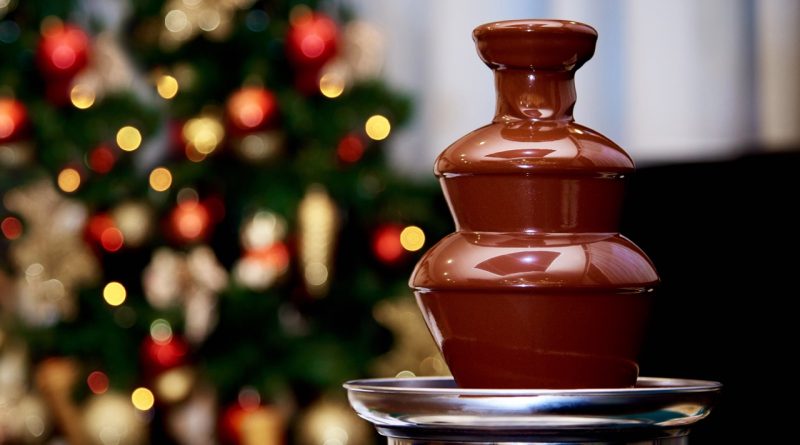Can You Use Sephra Chocolate in Molds
===
Sephra chocolate is a popular choice among chocolatiers and home bakers alike, known for its smooth texture and rich flavor. Many wonder if this type of chocolate can be effectively used in molds for creating beautiful, custom chocolate shapes. Understanding the properties of Sephra chocolate, along with best practices and common troubleshooting tips, will help you maximize your results and enjoy the art of chocolate crafting.
Understanding Sephra Chocolate’s Composition and Properties
Sephra chocolate is formulated specifically for melting and fountain use, making it an ideal candidate for various chocolate applications. Its composition typically includes high-quality cocoa butter, sugar, and emulsifiers, resulting in a product that melts easily and sets with a glossy finish. Unlike traditional chocolate, which often requires tempering for solidification, Sephra chocolate is designed to maintain its integrity without this additional step, simplifying the process for novice chocolatiers.
The type of fat used in Sephra chocolate plays a significant role in its melting properties. Due to the high cocoa butter content, it maintains a fluid consistency when heated, which is essential for successful applications in molds. This characteristic allows for intricate designs and fine details to be captured in the mold, making it favorable for creating decorative chocolates or molds with complex shapes.
Another aspect to consider is the flavor profile. Sephra chocolate comes in various varieties, including milk, dark, and white chocolate, each offering a unique taste experience. This versatility allows users to select the right type of chocolate for their specific mold designs, catering to different palates and preferences. The richness of the chocolate can enhance the overall appeal of the final product, whether used for a special occasion or everyday treats.
Best Practices for Using Sephra Chocolate in Molds
To achieve the best results when using Sephra chocolate in molds, proper melting techniques are crucial. The chocolate should be melted slowly, preferably using a double boiler or microwave in short intervals. This prevents overheating, which can cause the chocolate to seize or lose its desirable texture. Stirring the chocolate during the melting process ensures an even consistency, making it easier to pour into molds.
When preparing your molds, ensure that they are clean and dry. Silicone molds are often recommended for chocolate crafting due to their flexibility, which allows for easy release of the finished product. If using plastic molds, consider lightly greasing them to facilitate removal. This step is particularly important when working with intricate designs that may be more prone to breaking during the unmolding process.
Temperature also plays a vital role in the molding process. Once melted, the chocolate should be poured into the molds while still warm but not hot. Allowing the chocolate to cool slightly can help it set more uniformly. After filling the molds, tap them gently on the counter to remove air bubbles, ensuring a smooth finish. Following these best practices will enhance the quality of your molded chocolates and help prevent common issues.
Tips for Achieving Perfect Molded Chocolate Results
To ensure your molded chocolates look professional and taste delicious, consider adding a layer of detail with flavored fillings or decorations. For instance, you can create a shell using Sephra chocolate and fill it with ganache or flavored creams. This not only enhances the taste but also adds visual appeal. Just make sure that the filling is compatible with the chocolate to prevent separation or undesirable textures.
Chilling your molds can also improve the final product’s quality. After pouring the melted chocolate, place the molds in the refrigerator for quicker setting. This helps the chocolate solidify evenly and reduces the risk of air pockets forming. However, avoid leaving the molds in the fridge for too long, as this can lead to condensation, which may affect the surface finish of the chocolate.
Finally, practice patience. Allow the chocolate to fully set before attempting to unmold it. Rushing this process can lead to breaking or smudging, diminishing the overall appearance. Once the chocolates are removed from the molds, consider storing them in a cool, dry place to maintain their texture and flavor, ensuring they remain an enticing treat for your audience.
Troubleshooting Common Issues with Molded Chocolates
Even with careful preparation, you may encounter some challenges when working with molded chocolates. One common issue is the chocolate not releasing cleanly from the mold. This can occur if the chocolate is not melted properly or if the molds are not adequately prepared. To avoid this, ensure that the molds are clean and dry, and consider lightly greasing them if necessary.
Another frequent problem is the appearance of white streaks or spots on the finished chocolates, known as bloom. This can happen when chocolate is overheated or subjected to temperature fluctuations. To minimize this, control the melting temperature and avoid storing molded chocolates in environments with varying temperatures. Using a thermometer can help maintain the ideal temperature for melting and pouring.
Lastly, if your chocolates appear dull or lack shine, this may indicate improper cooling or a lack of tempering. While Sephra chocolate does not require traditional tempering, ensuring a proper setting environment can help achieve that glossy finish. Refrigerating the molds for a brief period after pouring can assist in this, but be cautious with humidity levels. Addressing these issues promptly will improve your chocolate molding experience and ensure beautiful, delicious results.
===
Using Sephra chocolate in molds can yield stunning results when approached with the right techniques and knowledge. By understanding the properties of Sephra chocolate, adhering to best practices, and troubleshooting potential problems, anyone can craft impressive molded chocolates. Whether for personal enjoyment or special occasions, mastering this skill can elevate your chocolate-making endeavors to new heights.
